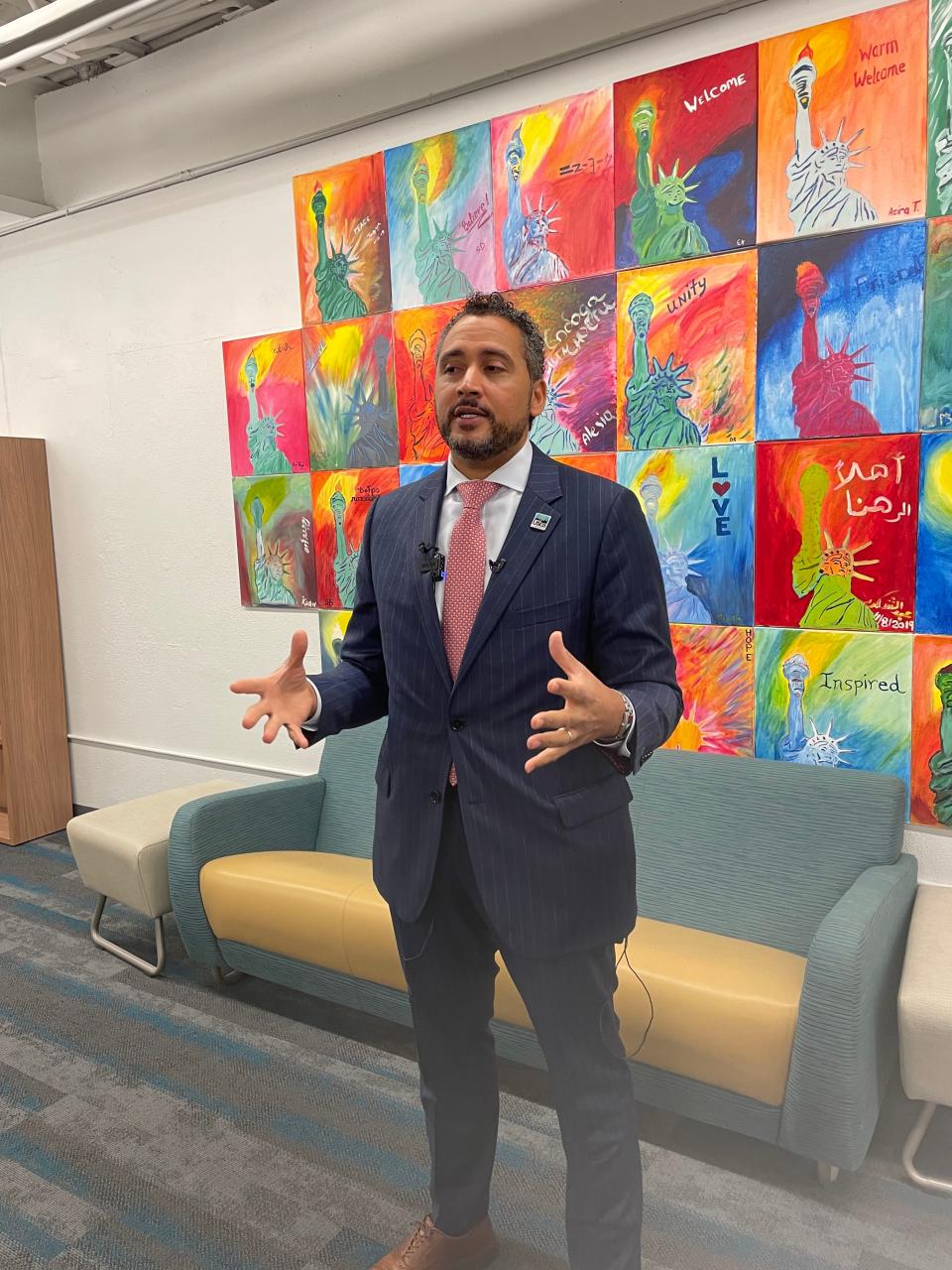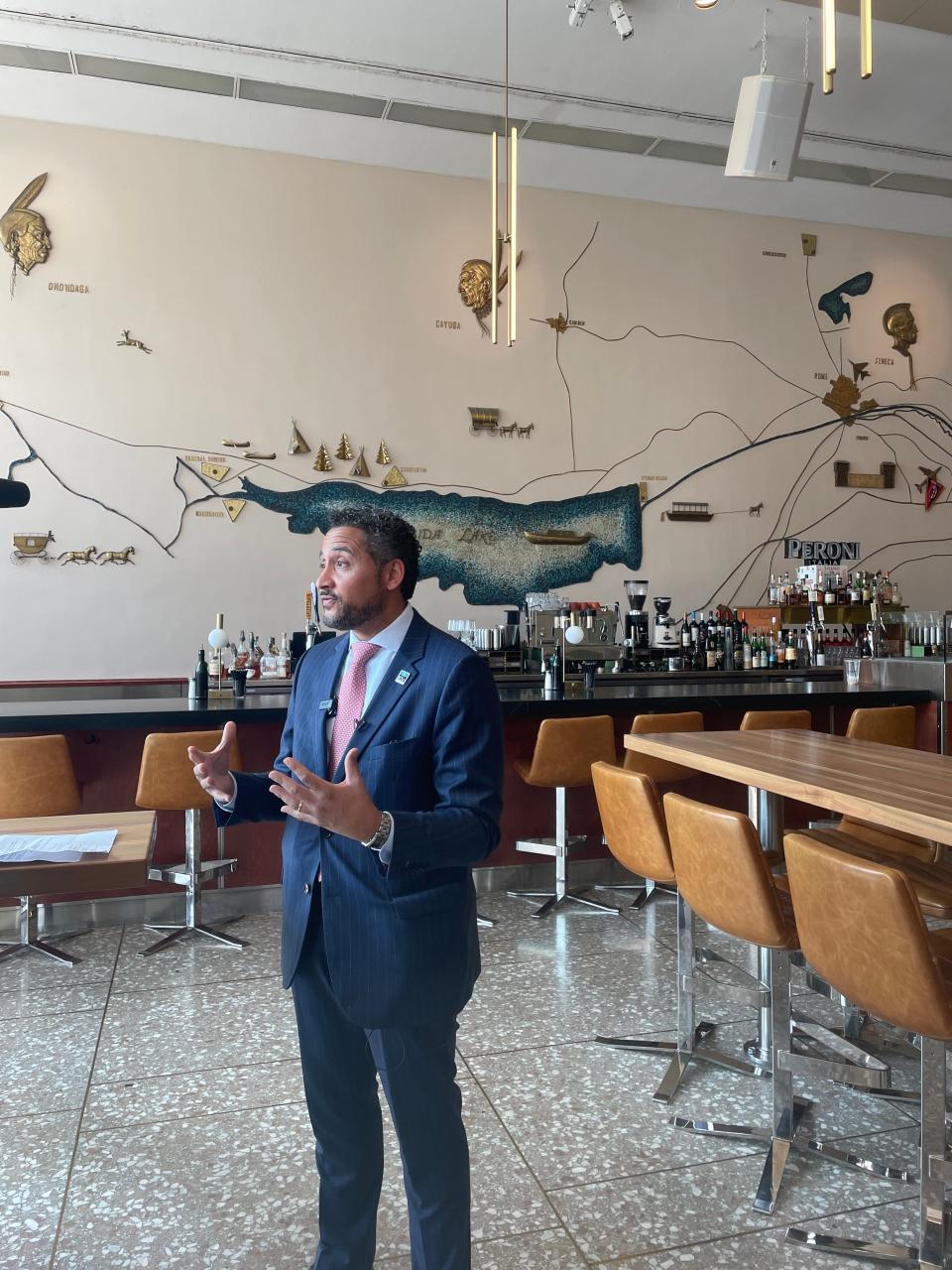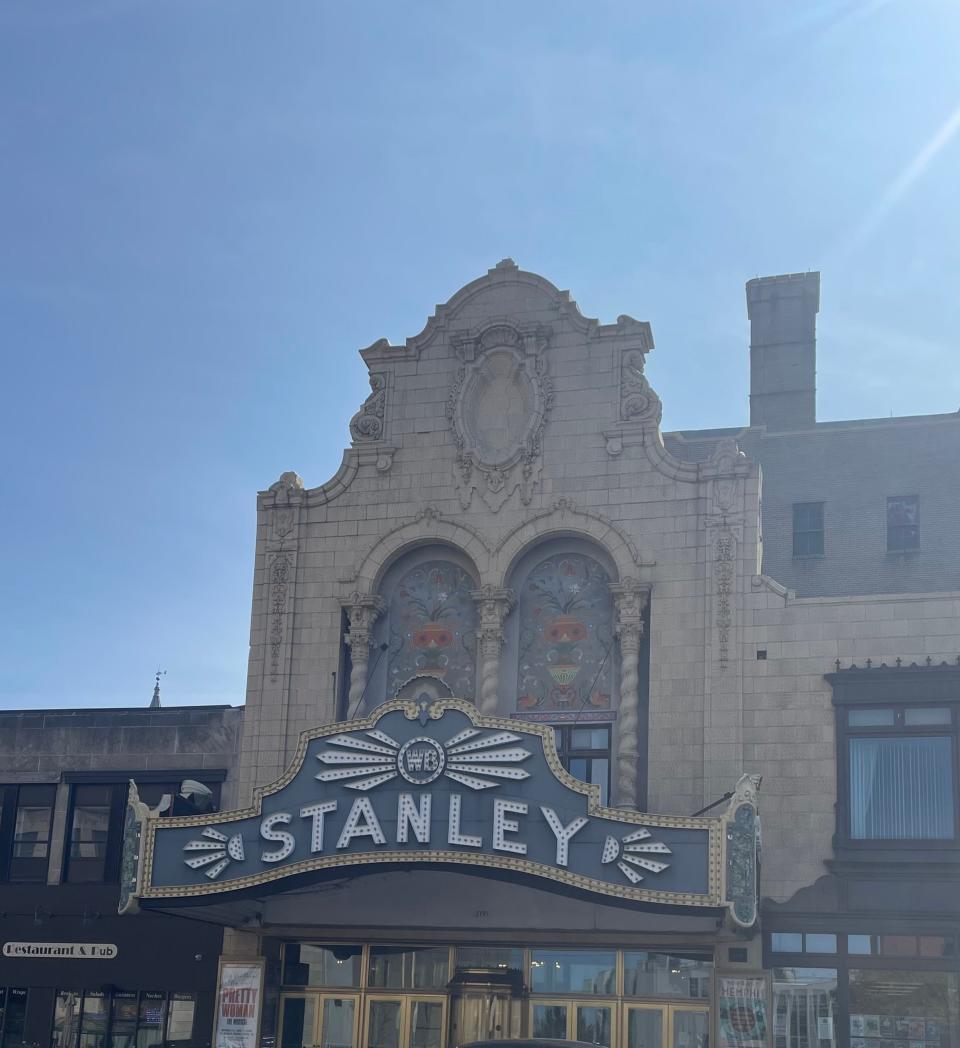NY secretary of state visits Mohawk Valley to see downtown revitalization efforts
New York Secretary of State Robert J. Rodriguez visited the Mohawk Valley Wednesday to tour Rome and Utica’s ongoing Downtown Revitalization Initiative (DRI) projects, which include The Center in Utica and Rome City Hall.
DRI is a state funding program that communities across New York can apply for. Communities selected by Regional Economic Development Councils receive $10 million for a variety of projects that power economic and cultural development in downtown areas.
Utica was selected in 2019, while Rome was selected in 2017.
“Our DRI program focuses on community-led projects,” Rodriguez said. “These are the ones that the community decided in their visioning sessions that were the most important priorities.”

Utica DRI projects include renovations and additional resources for The Center, the transformation of Oneida National Bank into a structure that houses multiple businesses and the refurbishment of the historic Stanley Theatre. Rome DRI projects include renovations at city hall and at the Capitol Theatre and the construction of Copper City Lofts, an affordable housing complex that will also house artists and feature art gallery space in the lobby.
Utica's revitalization
The Center in Utica is part of the state’s Office for New Americans network, which strives to welcome and support immigrants across the state. Rodriguez said The Center is a prime example of the connection between supporting refugees and immigrants and downtown revitalization.
“It's about recognizing that here in Utica, there's a really unique dynamic – a longstanding history of welcoming new Americans, refugee resettlement, certainly in the last 40 years, but this has generationally been happening,” Rodriguez said. “First it was the Irish and Italian migration, and now we’re here in a different moment. But that workforce has very much supported the transformation that's happening here in Utica, and the revitalization that's happening in the downtown area.”
Shelly Callahan, executive director of The Center, led a tour which highlighted the many services The Center offers: English language classes, pro bono legal assistance, multilingual traffic safety classes and multilingual public health initiatives, to name a few.
With the DRI funds, The Center has been able to install an elevator to make the building more accessible, and is working on moving its workforce-centered offices downstairs to consolidate those services in one place.
Callahan spoke of the in-depth career support offered by The Center’s New American Cities Program.
“It is career-focused,” Callahan said. “It helps people dig a little bit deeper into career thoughts, training, and long-term plans.”
Rodriguez said at the department of state, opportunity was a top priority.
“Really, it's about making sure that that dream, that American dream that has been embodied in the state of New York in so many different ways, exists for people who are coming here and are newly arrived,” Rodriguez said. “So that's what we're looking to do. Utica has been a tremendous example of what's possible when we combine a welcoming spirit with an Office of New Americans and an opportunity center and connect them to the opportunities that exist in the area.”

The former Oneida National Bank now houses restaurants such as Nostro Restobar and Lounge and Joseph Putrello Coffee and Barista Bar. It is subdivided with different tenants on each floor, and also features multiple large state-of-the-art kitchens.
Francis Pezzolanella, owner of multiple local restaurants such as Ocean Blue Restaurant & Oyster Bar and co-owner of the former bank building, said that one of the kitchens is used to prepare food in bulk for other restaurants. Additionally, restaurant entrepreneurs and food truck owners who may not have kitchen space of their own can rent out that kitchen. In these ways, the former bank building provides support for businesses even outside of its own walls.
“A lot of recipes that we do for other restaurants are their own recipes,” Pezzolanella said. “So if they don't have a big enough kitchen, we do it right here for them, and then we store it and deliver it for them. It works out really well.”

The building is right down the street from the historic Stanley Theatre. Allison Madmoune, regional director for Empire State Development, said DRI funds are being used for the Stanley and for Rome Capitol Theatre to restore their exteriors.
“Leaders around upstate New York and in New York state, they know that investing in the arts is integral to downtown revitalization,” Madmoune said. “When the theater is on, when the shows are on, downtown is hopping. Restaurants like Nostro are packed to the gills. So those are the synergies that we’re looking for.”

Rome's revitalization
Through a combination of American Rescue Plan funding, DRI funding, and money from a capital reserve account, Rome’s City Hall is receiving needed upgrades to its windows, roof, electrical system, and more.
Rodriguez said that the renovation of outdoor space at city hall and the demolition of the James Street parking garage in Rome will help open up the city.
“The foundation of that, the open space that's going to be created, I think is going to be really phenomenal, as well as supporting the two parks that are there, both Gansevoort Park and the Veteran’s Memorial Park, helping to open up and create access to that area as well,” Rodriguez said. “I think that’s going to continue to make Rome not just a livable downtown, but a really amazing recreation destination in the area.”
Rodriguez also made a stop at Cold Point Corp. on Henry Street, a facility opened in 2021. The company reverse-engineers obsolete HVAC equipment.
The facility is newly constructed on a brownfield, or a vacant site, with funding from New York state’s Brownfield Opportunity Area Program.
Rodriguez said that that program, as well as the Local Waterfront Revitalization Program, offer additional funding beyond the DRI pool for communities to lay the groundwork for DRI projects.
Steve Schreppel, president of Cold Point, said the company used to have two facilities and were able to consolidate their workspace into the Henry Street location with about 35% more space. He has been able to hire 18 new employees since the new facility opened, and said that creating efficiency as well as climate control in the plant was a priority.
“We air-condition it, which is almost unheard of in upstate New York as far as a plant,” Schreppel said. “We can recruit higher caliber workers. I think what we really find is that the employees out here, they're more productive throughout the whole day.”
DRI's present and future
The DRI project is now in its seventh round, with the state receiving applications from communities all over New York this month. In the past two years, the state has created additional funding opportunities through New York Forward, which focuses on smaller towns and villages.
Rodriguez stressed the importance of Regional Economic Development Councils reviewing applications for their specific regions.
“That way, it's a little bit more equitable and reflective of the community and the regional basis for that,” he said.
Rodriguez said that downtown revitalization means a holistic combination of factors, from business to recreation to the arts.
“I think what’s interesting when we talk about DRI is that the formula is varied, and it includes a lot of different components that people want to see in their downtown,” Rodriguez said. “So yes, everybody wants small businesses and economic development vehicles. People always want parks and open space, or potentially access to waterfronts. And you also want to see your arts component, you also want to see the cultural component, because that also has a multiplier effect on the small businesses. That brings people in, that creates a vibe, that creates a reflection of the people and the community that's already there.”
This article originally appeared on Observer-Dispatch: Downtown revitalization: Secretary of state tours Utica, Rome

